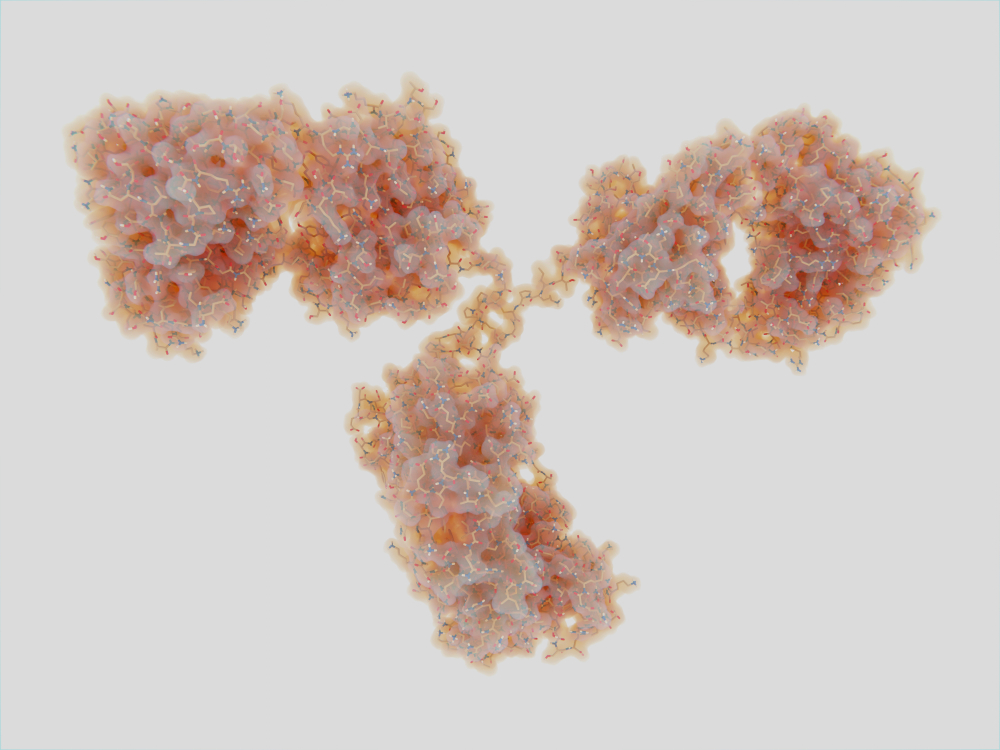MOUSE ANTI-PORCINE CORONAVIRUS SPIKE ANTIBODY (5B4)
Mouse porcine coronavirus antibody (5B4) is a monoclonal antibody, specific for the spike (S) protein of the swine enteropathogenic coronavirus, Transmissible Gastroenteritis Virus (TGEV). Antibody has been manufactured for use in ELISA, Western blot and immunofluorescence.
PRODUCT DETAILS – MOUSE ANTI-PORCINE CORONAVIRUS SPIKE ANTIBODY (5B4)
- Mouse monoclonal antibody against porcine coronavirus, Transmissible Gastroenteritis Virus (TGEV).
- Isotype – Mouse IgG2a.
- Presented in PBS with 0.01% Sodium Azide.
- Suitable for use in WB, ELISA and IFA.
BACKGROUND
Pig diarrhoea is responsible for considerable economic losses to the swine industry (Katsuda et al., 2006). Transmissible gastroenteritis virus or Transmissible gastroenteritis coronavirus (TGEV) is a coronavirus which infects pigs and causes severe diarrhoea. The virus is a member of the genus Alphacoronavirus, subgenus Tegacovirus, species Alphacoronavirus 1. Other coronaviruses that belong to the species Alphacoronavirus 1 are Feline coronavirus, Canine coronavirus and Feline infectious peritonitis virus. Porcine coronaviruses have been known to be circulating in swine for many decades, including Transmissible gastroenteritis (TGE, 1946), Haemagglutinating encephalomyelitis (HEV, 1962), Porcine epidemic diarrhea (PED, 1977), Porcine respiratory coronavirus (PRCV, 1984), Deltacoronavirus (PDCoV, 2009) and most recently Swine acute diarrhea syndrome coronavirus (SADS-CoV, 2018).
TGEV is an enveloped, positive-sense, single-stranded RNA virus and has three major structural proteins; phosphoprotein (N), integral membrane protein (E1), and large glycoprotein (E2). The N protein encapsulates the genomic RNA, and the Spike (S) protein projects from the viral surface. The E2 protein is thought to be involved in pathogenesis by helping the virus enter the host cytoplasm. The E1 protein is mostly embedded in the lipid envelop and hence plays an essential role in virus architecture. It may also interact with the lymphocyte membrane, resulting in the induction of IFN-coding genes. TGEV enters the host cells by first attaching to it using the spike glycoprotein. The S protein interacts with the porcine aminopeptidase N (pAPN), a cellular receptor, to facilitate its entry. Once the virus infects the host, it multiplies in the cell lining of the small intestine resulting in the loss of absorptive cells that in turn leads to shortening of villi. The infected swine then have reduced capability for digesting food and die from dehydration. The mortality rate is close to 100% in piglets less than 2 weeks of age. In adult animals, however, there is a lower mortality, although these recovered animals can spread TGE to uninfected swine for many weeks (Xia et al., 2018). Porcine epidemic diarrhea virus (PEDV) and transmissible gastroenteritis virus (TGEV) are both important emerging and re-emerging viruses in pigs that pose significant economic threat to the swine industry (Zhang & Yoo, 2016).
REFERENCES
- Katsuda K, Kohmoto M, Kawashima K, Tsunemitsu H. (2006). Frequency of enteropathogen detection in suckling and weaned pigs with diarrhea in Japan. J Vet Diagn Invest. 2006 Jul; 18(4):350-4.
- Xia L, Yang Y, Wang J, Jing Y, Yang Q. (2018). Impact of TGEV infection on the pig small intestine. Virol J. 2018;15(1):102.
- Zhang Q. and Yoo D (2016). Immune evasion of porcine enteric coronaviruses and viral modulation of antiviral innate signaling. Virus Res. 2016;226:128–141.

